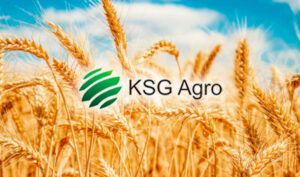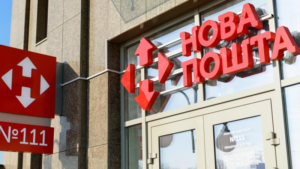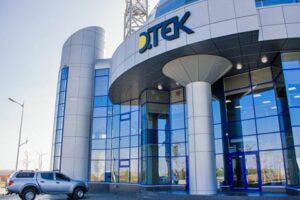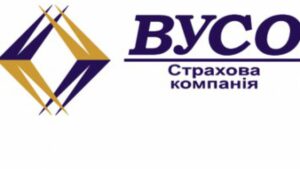
In January–September 2025, the KSG Agro agricultural holding increased its revenue from the sale of live pigs by 48.3% to $9.22 million, compared to $6.21 million in the same period of 2024.
According to the agricultural holding’s report, published on the Warsaw Stock Exchange on Thursday, profits in the pig farming segment for the specified period amounted to almost $1.936 million.
“Despite the war, there is a stable demand for high-quality pork in Ukraine. This summer, our herd was replenished with 500 purebred sows from Danish Pig Genetics, supplied by Breeders of Denmark A/S (Denmark). This made it possible to renew the pig population with 4,000 of the most stable, highly productive F-1 hybrid sows,” said Sergey Kasyanov, Chairman of the Board of Directors of KSG Agro.
He assured that all pork produced at the agricultural holding’s pig farms goes to the domestic market, which makes it possible to effectively ensure Ukraine’s food security during the war.
The vertically integrated holding company KSG Agro is engaged in pig breeding, as well as the production, storage, processing, and sale of grain and oilseeds. Its land bank in the Dnipropetrovsk and Kherson regions is about 21,000 hectares.
According to KSG Agro, it is one of the top five pork producers in Ukraine.
In 2023, the agricultural holding began implementing a “network-centric” strategy, under which it will transition from developing a large location to a number of smaller pig farms located in different regions of the country.
In January-September 2025, KSG Agro received $5.96 million in operating profit and $6.92 million in gross profit, which is 68% and 31% more than in the same period of 2024.

Nova Poshta, Ukraine’s leading express delivery service from the Nova Group, is operating 147 branches in Odesa on generators, while the state postal operator Ukrposhta is providing a full range of services in 72 branches despite power supply problems after shelling in the region.
“In isolated cases (several branches), where it was not possible to connect generators immediately due to technical issues, operators accepted and delivered parcels manually so as not to interrupt customer service until the situation was resolved as quickly as possible,” Ukrposhta said in a comment to Interfax-Ukraine.
The Nova Poshta Telegram channel notes that the company’s branches offer the opportunity to recharge phones, use the internet, and warm up. Ukrposhta provides the same services in its branches.
Separately, Ukrposhta added in a comment to the agency that the branches’ working hours have not changed.
As reported, as a result of a massive missile and drone attack by the Russian Federation on the night of December 12-13, four 330 kV substations of the National Energy Company Ukrenergo were damaged and approximately 60% of consumers in Odesa and the region were cut off from the power supply. A significant portion of consumers were left without electricity and heating for three days or more.
In addition, on December 18, the enemy launched another attack on the infrastructure, which again led to power outages.

The Global Environment Facility (GEF), under the leadership of the Food and Agriculture Organization of the United Nations (FAO), has approved eight projects totaling nearly $60 million aimed at improving agri-landscape management, developing climate-oriented and biodiversity-friendly livestock farming, and restoring forest, coastal and marine ecosystems.
According to a press release from the FAO, Ukraine will receive $5.4 million in funding to restore and maintain accessible forests and agroforestry systems to ensure climate resilience, enhance ecosystem services, and promote green recovery from the effects of war.
In addition, Tanzania will receive $2.4 million, Congo – $6 million, Bangladesh – $9.2 million, India – $9.9 and $8.8 million, Mexico – $8 million, and Senegal – $8.9 million.
The approved projects will attract about $429 million in co-financing and improve the management of 305,000 hectares of protected areas on land and at sea. They also provide for the restoration of 314,000 hectares of landscapes, improved management of 1.2 million hectares of productive land, and a reduction of 84.5 million tons of greenhouse gas emissions, benefiting more than 1 million people on four continents, the FAO said.
“Our portfolio and partnership with the GEF have become more integrated and effective over the years, allowing us to more effectively implement four areas of improvement, leaving no one behind: improving production, improving nutrition, improving the environment, and improving lives,” said FAO Director-General Qu Dongyu, whose words are quoted in the statement.
The FAO-GEF partnership currently provides 142 countries with funding for agrifood system solutions. The FAO-GEF portfolio for supporting environmental, climate, and biodiversity conservation measures in agriculture and food systems exceeds $2 billion in grant funding and has already attracted more than $14 billion in co-financing.

DTEK Energy’s machine builders manufactured over 3,000 pieces of mining equipment in January-November this year, including eight new roadheaders, one mine fan, and 10 electric motors, according to the company’s press release.
In addition, over 2.2 million spare parts and components were manufactured during this period.
“We are all working towards one goal – to get through this, already the fourth, winter of war. Ukrainian machine builders are also working hard to meet the equipment needs of Ukrainian mines. This is our stability, first and foremost, during the heating season,” said DTEK Energy CEO Oleksandr Fomenko in the statement.
As reported, since the beginning of 2025, DTEK Energy has invested UAH 6.1 billion in Ukrainian coal mining. In 2024, investments in Ukrainian mines amounted to about UAH 7.5 billion, and over the past three years (2022-2024) – more than UAH 18 billion.
DTEK Energy provides a closed cycle of electricity production from coal. As of January 2022, the company’s installed thermal generation capacity was 13.3 GW. A complete production cycle has been created in coal mining: coal extraction and enrichment, machine building, and maintenance of mining equipment.
The DTEK Group is the largest private investor in Ukraine’s energy sector, with 55,000 employees and more than EUR 12 billion of capital invested since 2005. It is wholly owned by SCM Holdings, with Rinat Akhmetov as the ultimate beneficiary and sole shareholder.

The agricultural enterprise Zemlya i Volya LLC (Chernihiv region) reported an increase in information attacks and “black PR” against the company and the family of its late founder Leonid Yakovishin, according to the Chernihiv information portal CHE.CN.UA following a meeting of the workforce.
Acting CEO Valentina Chernyakova reported that the farm had completed seasonal work on time and prepared the land for the next season. “The first thing I want to do is thank the entire workforce… for harvesting on time and preparing for next year,” she said.
According to her, since August 2025, the company has increased salaries by 30%, and the average wage is UAH 30,000. Also, as noted in the article, at the beginning of 2026, employees are to receive a “thirteenth salary.”
First Deputy Director General Vasyl Nesteruk said that the season was difficult due to weather conditions and high corn moisture content, which increased drying costs. According to him, the farm spent about UAH 130 million on natural gas for drying corn and also purchased three generators costing UAH 8 million each. “Despite the difficulties, we have completed all the tasks set before the team and are ready for the next harvest,” Nesteruk said.
At the meeting, the management also announced its intention to increase the rent for land, the amount of which will depend on the regulatory monetary valuation, and to settle accounts with landlords by the end of December, as stipulated in the contracts.
Commenting on the information attacks, Chernyakova said: “Some people want to come in and reap the rewards… some people want to come in and take over everything that is already ready.” She appealed to the team not to allow such a scenario to happen.
She also said that the company continues to work and assist the military, and that “Leonid Yakovishin’s brainchild… is not for sale.”
Zemlya i Volya LLC (EDRPOU code 30866306) was registered on March 29, 2000, with its main activity being the cultivation of grains and oilseeds.
According to the company, it cultivates 32.5 thousand hectares of arable land, with corn as the key crop (92.5% of the sown area), as well as wheat, barley, and other crops; its areas of activity include crop production, livestock farming, and processing.
According to Opendatabot, the company’s revenue in 2024 was UAH 2.677 billion, net profit was UAH 803.7 million, assets were UAH 3.782 billion, liabilities were UAH 458.8 million, and the number of employees was 1,200.

Shareholders of IC “VUSO” (Kyiv) at the meeting from December 4 to 9 have decided to allocate UAH 20.013 mln of confirmed retained earnings for 2024 to dividends.
As the company reported in the information disclosure system of the National Commission on Securities and Stock Market (NCSSM), the rest of the profit for 2024 in the amount of 98.811 mln is planned to be left undistributed.
The company also reports that dividend payments will be made at the rate of UAH 0.73 per share. Payment of dividends will be made in full directly to shareholders in the manner prescribed by law within six months from the date of adoption of the relevant decision by the general meeting of shareholders.
As reported, the company’s net confirmed retained earnings for 2024 amount to UAH 118.824 mln.
The company in 2024 collected UAH 3.462 billion of gross premiums, which is 29.3% more than for 2023, net premiums increased by 25.55% to UAH 3.105 billion and net earned premiums by 15.83% to UAH 2.737 billion.
IC “VUSO” for 2024 has paid out UAH 1,414 billion to clients, that is by 45,40% higher than the volume of insurance payments and indemnities for 2023. Thus, the level of payouts has increased by 4,52 percentage points – up to 40,85%.
Assets of the insurer as of January 1, 2025 have grown by 25,76% – to UAH 1,917 billion, shareholders’ equity – by 22,45% – to UAH 755,839 million, liabilities – by 28,01% – to UAH 1,161 billion, cash and cash equivalents – by 36,09% – to UAH 758,730 million.
IC “VUSO” was founded in 2001. It is a member of ITSBU and UFS, a participant of the Agreement on direct settlement of losses and a member of the Nuclear Insurance Pool.